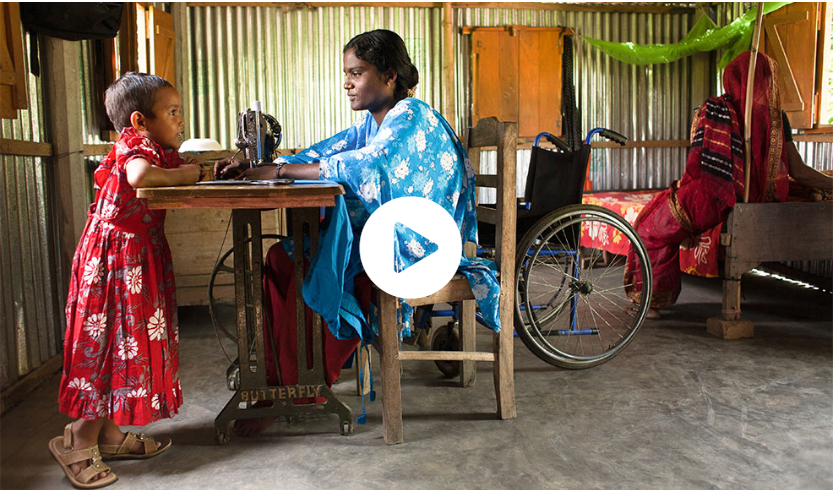Sendai Framework of Disaster Risk Reduction
The Sendai Framework for Disaster Risk Reduction 2015 - 2030 was adopted in March 2015 and is a voluntary, non-binding agreement which recognises that the State has the primary obligation of disaster risk reduction, but that responsibility should be shared with other actors, including local government, the private sector, civil society, and other stakeholders.
Through its seven targets and four priorities for action, the Sendai framework aims for the substantial reduction of disaster risks and losses in lives, livelihoods and health and the economic, physical, social, cultural, and environmental assets of persons, businesses, communities and countries.
Persons with disabilities are disproportionately impacted by disasters, and their active participation is essential in the implementation of disaster risk reduction (DRR) activities. The many references to disability inclusion in this Framework are a substantial improvement and set a precedent. Delivering on these commitments will mean true alignment with the UN Convention on the Rights of Persons with Disabilities (CRPD).
The incorporation of the principles of Universal Design and the commitment to disaggregate data by disability, gender and age, if implemented, will build safer, more accessible communities.
Mainstream humanitarian actors realised that they had forgotten to consider disability up until now and that this needed to change.
The framework acknowledges, that disaster risk reduction “requires an all-of-society engagement and partnership. It also requires empowerment and inclusive, accessible and non-discriminatory participation.” It says that empowering women and persons with disabilities to publicly lead and promote gender-equitable and universally accessible response, recovery, rehabilitation and reconstruction approaches is key. Furthermore, the framework acknowledges persons with disabilities and their organisations (OPDs) as critical in the assessment of disaster risk and in designing and implementing plans tailored to specific requirements. It includes further remarks on the importance of other marginalised groups like women, children, older people, migrants, or indigenous people.
The Sendai conference itself was the first international meeting of its kind to provide a wide range of accessibility features. As a result, more than 200 persons with disabilities actively participated as delegates, speakers, panellists, and contributors.
The Sendai conference was important on two levels.
- Disaster Risk Reduction itself needs to be embedded into development and the post-2015 framework (including the 2030 Agenda for Sustainable Development). To achieve this without including persons with disabilities is impossible.
- The conference built momentum and generated positive support for the promotion of disability-inclusive DRR. Disability-inclusive Disaster Risk Reduction (DiDRR) is driven by a movement of allies.
Mainstream humanitarian actors in Sendai realised two things: firstly, that they had forgotten to consider disability up until now and that this needed to change. Secondly, the disability movement has a voice and this expert voice is highly informed.
